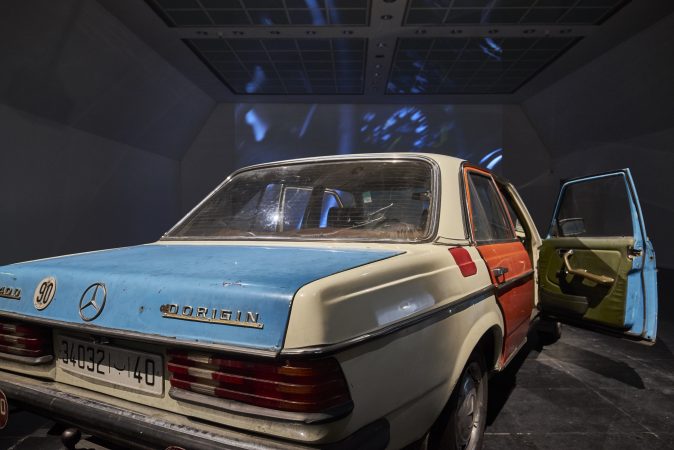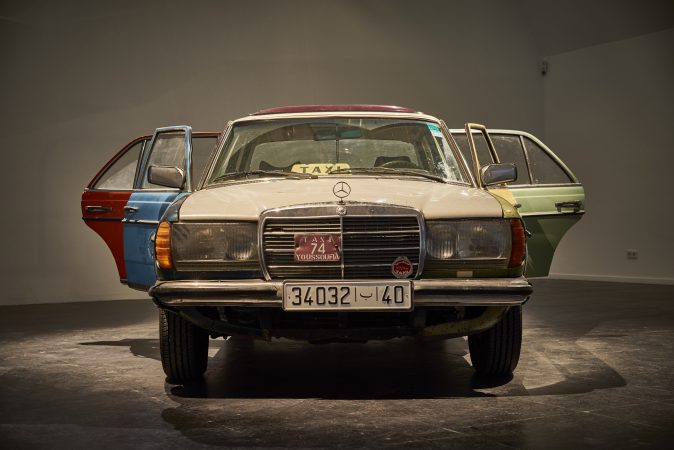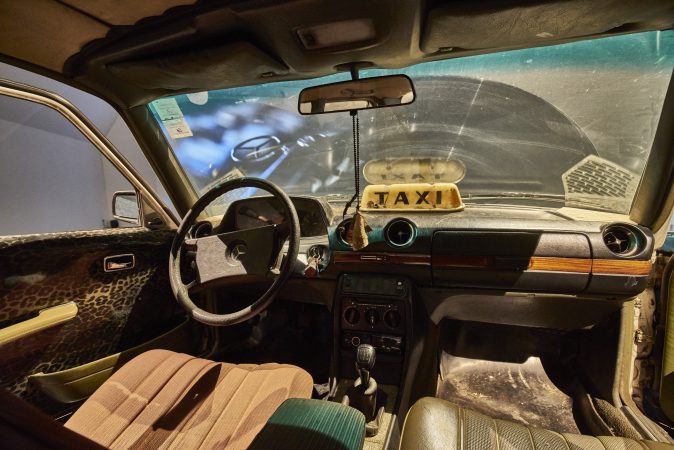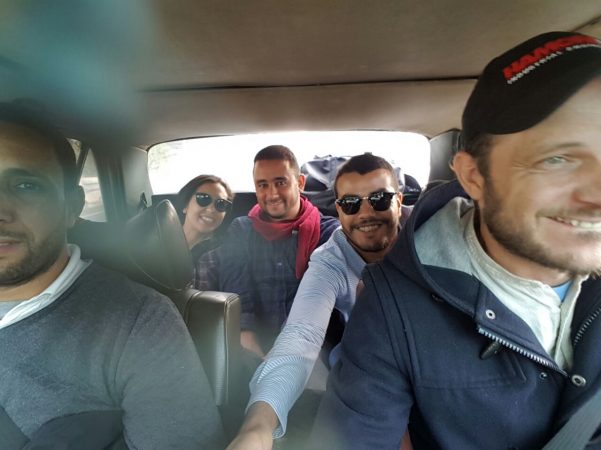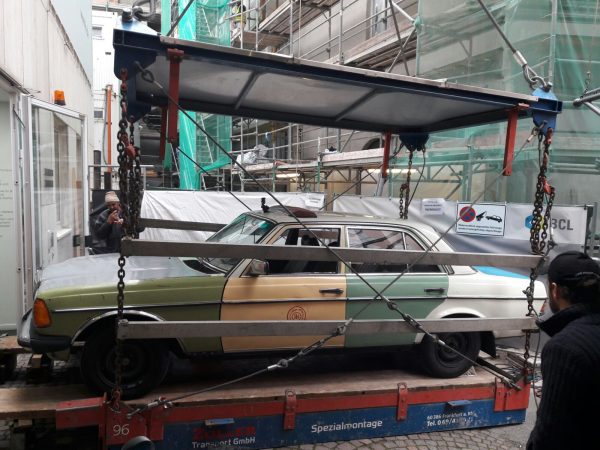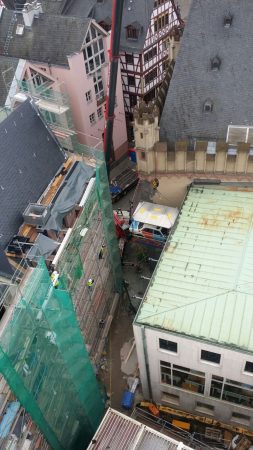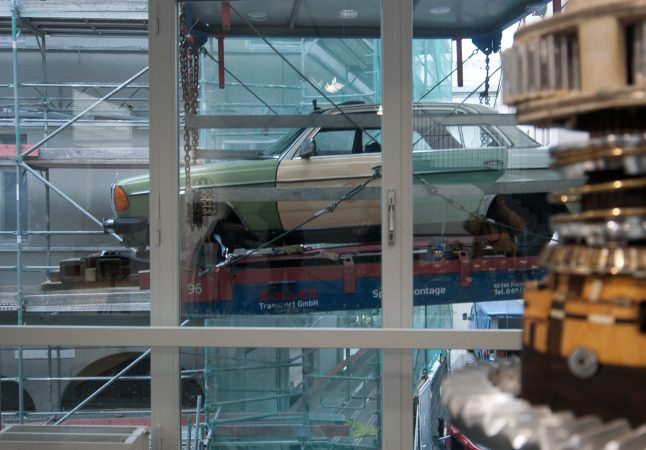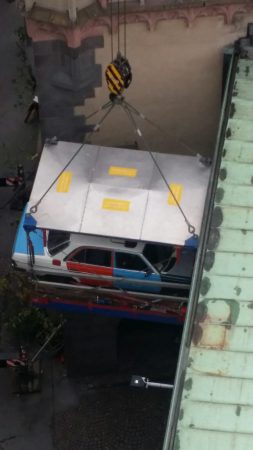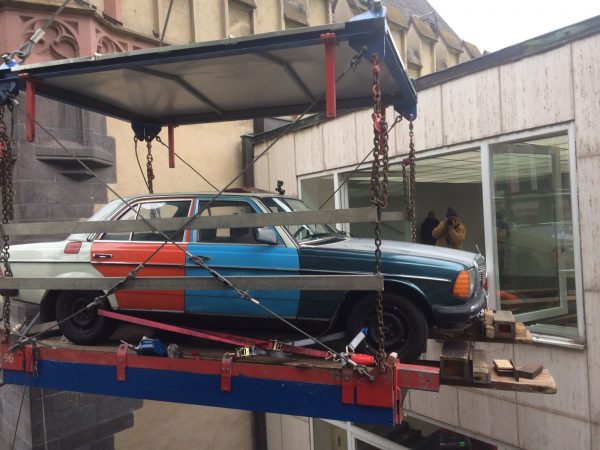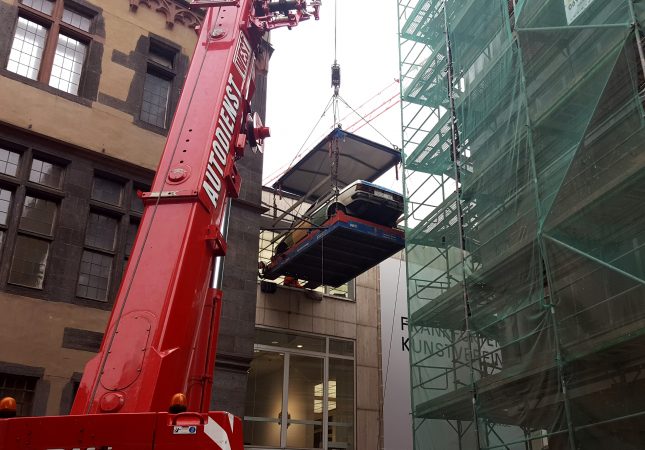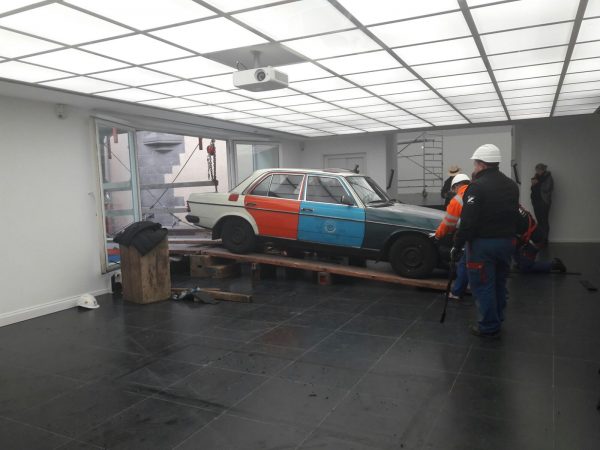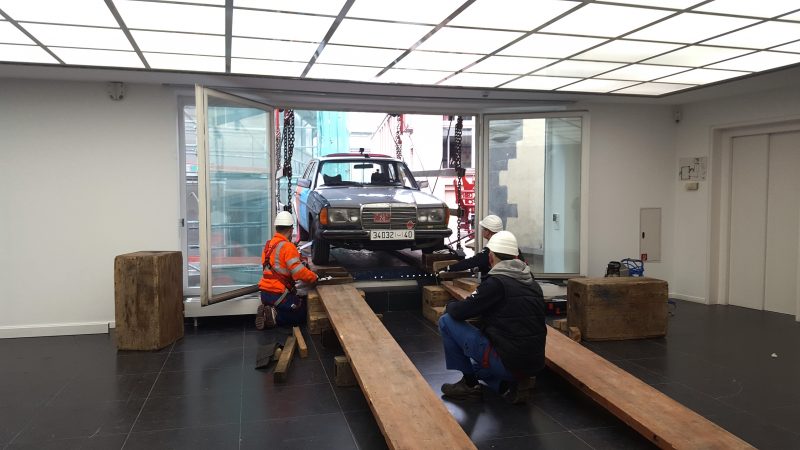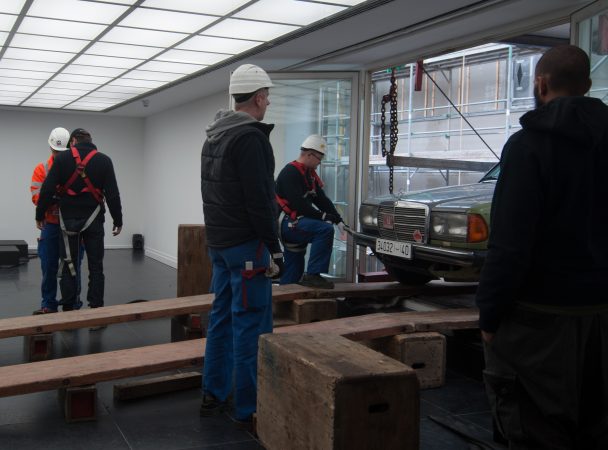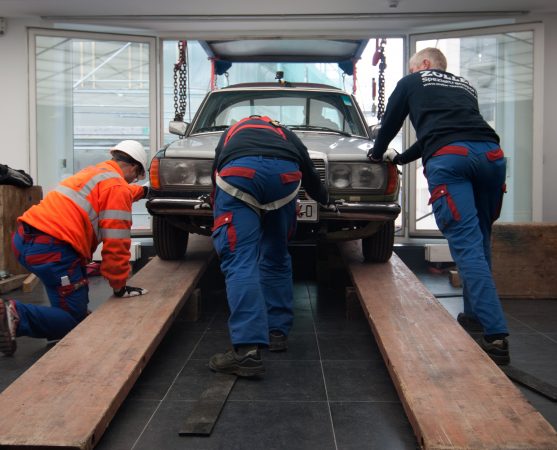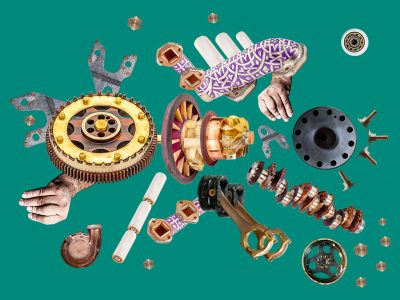Eric van Hove
Dorigin, 2016
Mixed media, 240 materials of the original vehicle Mercedes 240 D
468 x 177 x 144 cm, ca. 1430 kg
Courtesy the artist
Thanks to the support of the Frankfurter Kunstverein, Eric van Hove developed the new work Dorigin for the exhibition. This was a Mercedes-Benz 240 D assembled out of component parts of ten different vehicles. Van Hove was interested in the historical and social symbolic value of the car. The model was one of the most sold cars during the 1970s and 1980s. In the era of economic recovery, this vehicle indicated the mobility of an aspiring middle class, until it was considered old-fashioned, discarded and exported to the African continent. In the following decades the cars were predominantly used as Taxis. In Morocco, too, Mercedes-Benz signifies high quality and excellent industrial design. This is why the car symbolised the promise of sound, reliable German technology which, thanks to its purely mechanical structure, owners repaired and partially reconstructed to maintain its function.
The variety of colours in Dorigin’s body indicates the different Moroccan cities in which the Mercedes was used as a Taxi. Pistachio green stands for Meknes, metallic blue-green for Knefra/Tighassaline, azure for Imzagame, ochre for Ouarzazate, white for Casablanca, and orange for Larache. In the recent past the Moroccan government has been retracting these vehicles in support of higher environmental standards.
The artwork was developed in the van Hove studio. Dorigin was crafted according to the principles of assemblage, asserting itself as sculptural collage, which was temporarily restored to its original function. Van Hove was working with his particular artistic principle of transformation. He selects items representative of a historical and social phenomenon, in order to examine them for their signification within changing contexts. Eric van Hove recodes the utility object as a piece of art and transforms a serial product into a unique copy. With Dorigin, van Hove established a conceptual link between the country of origin of the Mercedes-Benz 240 D and its second home, Morocco. These vehicles are still in widespread use there and are a dominant feature of the road scene. After the production of the piece in Marrakech, a complicated import and customs procedure made possible by the Frankfurter Kunstverein enabled Dorigin to return to Germany. As a functioning vehicle, the car was driven by the artist and three team members from Morocco via Spain and France to Germany to be exhibited in the exhibition rooms of the Frankfurter Kunstverein. In Dorigin, the artist closes a cycle from Germany to Morocco as the work returns to its native country. This journey transferred it back to its original context and gave it new significance. During this process, the vehicle, initially produced as commodity, became a symbol of intercultural exchange. Dorigin is borrowed from French and translates roughly as “original.” In Morrocco the term refers to the appreciation of commodities imported to North Africa from Europe.
Dorigin, 2016
Film
Creative Director Meriem Abid
Courtesy the artist
The film was produced specifically for the exhibition at Frankfurter Kunstverein and, together with the Mercedes-Benz 240 D, constitutes the work Dorigin. The film shows the vehicle’s fabrication in Morocco and its journey to Frankfurt. The first part of the film documents the car’s assemblage process. Owing to the absence of people, the vehicle appears to assemble itself. On its journey, Dorigin becomes a traveller heading north. Starting from Marrakesh, the car crosses Spain, France and Germany.
Dorigin’s route passes through places representing the interrelation of European and Arab culture, as well as their shared history: the city of Sesena Nuevo in the Toledan province planned for 21.000 residents, until it was left empty when the real estate bubble burst in 2007, creating the opportunity to give housing to immigrants; the Douaumont monument in Verdun, where 70,000 Muslim soldiers fell fighting for France in World War I; or present day’s Konrad-Adenauer-Bridge linking Ludwigshafen and Mannheim, where a Moroccan colonial infantry unit was garrisoned between 1918 and 1925 for the purpose of controlling the French occupied Rhine area.

